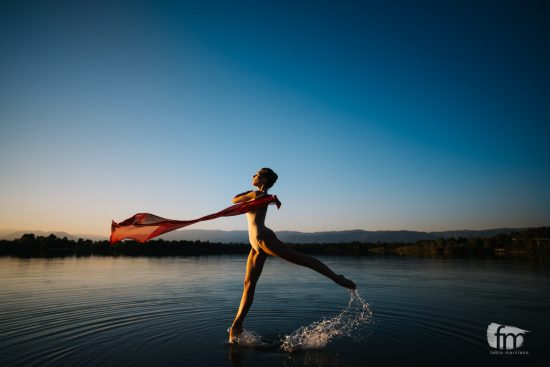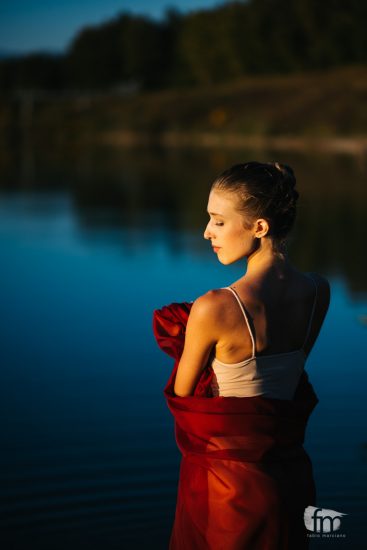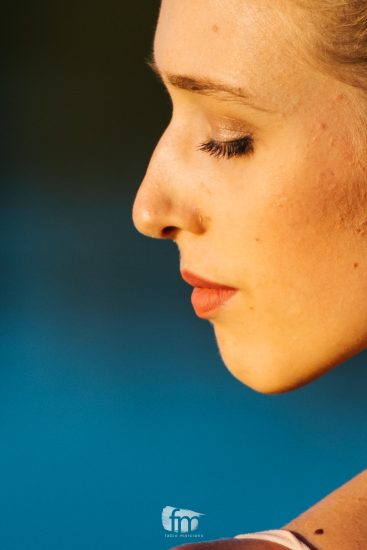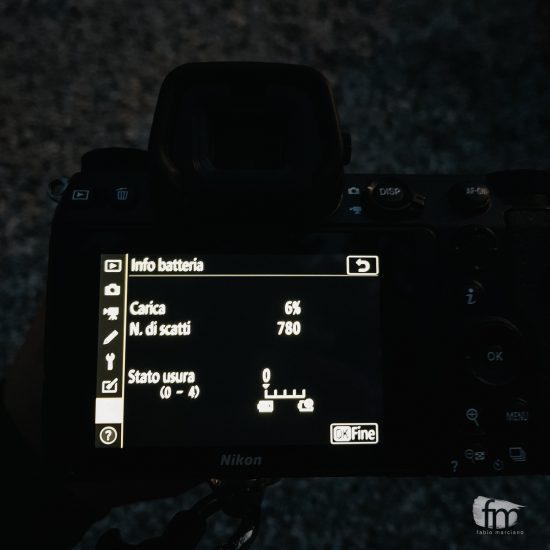![Nikon Z7 + Nikkor 24-70 f4 Z [AF-C dynamic area]](https://nikonrumors.com/wp-content/uploads/2018/10/Nikon-Z7-mirrorless-camera-review4-550x367.jpg)
![Nikon Z7 + FTZ + Nikkor 85mm 1.8 G [AF-C subject tracking]](https://nikonrumors.com/wp-content/uploads/2018/10/Nikon-Z7-mirrorless-camera-review6-550x367.jpg)

My hands-on experience with the new Nikon Z7 by Fabio Marciano (website | Instagram | Facebook):
First of all, I would like to introduce myself: I am an Italian wedding photographer based in Padua who has used Nikon cameras for the past 8 years; and like many others, I was thrilled when Nikon announced their new mirrorless camera system. I could not wait to get one of the new models into my hands. When I was offered the chance to test the Nikon Z7 with the new 24-70mm f4 Z, I did not hesitate. I immediately organized a small photo shoot at a nearby lake and later also tested it during an actual wedding for a whole day.
Here I want to share my experience and the insights I gained: Where I see the strengths and the weaknesses of the camera, and for which kind of photography I believe it works best.
For easier reading I have divided this article into different topics:
IMAGE QUALITY
Nikon Z7 + FTZ + Nikkor 85mm 1.8 G at 2.2 / ZOOM 1:1 [AF-C face tracking]
First of all, I would like to lose only a few words about the image quality of the camera as this aspect has already been thoroughly explored and discussed by others. With its 45 megapixels and truly stunning colour range, it really is very much like a Nikon D850 – only without a mirror. Nothing else has to be said. I found the corresponding lens (24-70mm) equally amazing, even though I normally use much faster lenses. The 24-70mm zoom lens surprised me with its lightness, the complete absence of distortions and incredible sharpness from edge to edge.
AUTOFOCUS
The Nikon Z7 gives you the possibility to set up your next shot without a restricted focusing area since the focus points are spread across the full frame. After a while of using this camera, I arrived at a point where I almost did not have to think about focusing at all – at least when the subject of the photograph was clear. With face detection and subject tracking turned on, it proved to be the perfect solution for portrait photo shoots. For shooting reportages I would still recommend the “dynamic area 9-point”-mode, though this sadly does not work as well for the Z7 as it does for DSLRs. Nevertheless, I felt a new kind of freedom using this camera because it seemed to intuitively translate the vision of an image I had in my mind into actual photos. I thus had a lot of fun with this camera – and I can imagine that for a lot of photographers the Z7 could be a game changer.
Even though the possibility to move the focus point manually during tracking (a feature that for example Sony does not have and that for my workflow is essential), I found the process a bit complicated and non-intuitive. Positioning the focus point felt slower when comparing it with DSLRs and it would have been useful to have a joystick that allowed one to move the focus point faster when tilting it more.
Another advantage that the Z7 has over DSLRs is the accuracy of its autofocus in combination with really wide lenses. While zooming in on a subject that you want to be sharp, the camera uses the contrast of the scene to nail the focus. This is a really useful feature that saved me quite some headaches.
Last but not least, the autofocus on the Z7 works extremely well in low-light situations where even the D750 would have problems. The electronic viewfinder and the assisted contrast autofocus make mirrorless systems the real kings of darkness – at least for relatively static situations. For photographing low-light action I would still recommend a DSLR.
THE SCREEN AND THE EVF
Coming from DSLR another feature of the Nikon Z7 that I found to be really useful is its OLED-screen Electronic viewfinder that makes it possible to see in really dark or low-light situations. For some photos during the wedding shoot, I had to raise the ISO up to 25000, and even though after a certain threshold (i.e. 18000 SS1/20 f 2.0) the screen’s luminosity is not increased any more, you will still see much more than you would be able to see with an optical viewfinder. Not being used to electronic viewfinders, I was also pleasantly surprised by the advantages that the automatically updated exposure and WB live preview in the viewfinder gave me (even when disabling the review of the photograph itself). Not having to check the photo after taking it made the whole process a lot faster and more intuitive. Keep in mind, though, that it is not possible to use the EVF together with the autoplay review on the screen, as the optical sensor that triggers the switch between the viewfinder and the screen prevents this.
Nevertheless, I have to admit that I am still not the biggest fan of the Z7’s electronic viewfinder as it felt somewhat videogame-ish and simply did not give me the clean and accurate feeling of an optical viewfinder. To tackle this problem, Nikon implemented a really interesting and innovative viewfinder mode that emulates an optical viewfinder. I found this feature to be very useful for reportage-style photography (e.g. weddings) because I often felt quite distracted by the continuously changing exposure and white balance in the EVF. Keep in mind, though, that enabling this mode, of course, disables some of the more interesting features of an electronic viewfinder like live preview of the exposure. Furthermore, I believe that the electronic viewfinder like it is now, will be prone to programmed obsolescence as the market for mirrorless systems is still in its infancy but evolves rapidly.PHYSICAL ATTRIBUTES AND HANDLING
When shooting the wedding I used the Z7 together with a D750, and after some time I started to forget which camera I was actually holding in my hands. The Z7 really feels very much like any of the (semi-) professional Nikon DSLRs. Even though technically the Z7 is lighter, I did not feel a significant difference in weight between those two cameras. I wish that the Z7 had more customizable buttons but, after all, the lack of them did not significantly affect my performance. Anyway, I am happy that Nikon did not get rid of the top screen that shows the most important information.
REACTIVITY
Personally, I found the start-up time of the camera too slow for the way I work. If you decide to use the Z7 as a second camera during e.g. weddings (as I did) it might happen that the camera is not ready when you need it. To lose an important moment due to slow camera start-up is a dealbreaker for me and one of the reasons why I would still recommend DSLRs for reportage-style photography.
BATTERY LIFE
When using DSLR it is pretty easy to increase the number of remaining shots simply by disabling autoplay and decreasing the photo review time. With the Z7 though, you will always have the same up-time as the screen/EVF is always on.
To give you two examples:
When I used the Z7 as second camera for the wedding (in the same way I would use a DSLR, i.e. AF dynamic area – some subject tracking – 8 operating hours, hardly ever turning it off) I ended up with 780 photos and 6% of battery life remaining. In contrast, my D750 would give me 1200 photos and 45% of battery life remaining!
When I used the Z7 as the only camera for the photo shoot at the lake I ended up with 439 photos and 51% of battery life remaining. (AF subject and face tracking – 3 operating hours). Under similar circumstances the D750 would have left me with 65% remaining battery life.
FINAL THOUGHTS
All in all, I think it makes sense to differentiate between planned photoshoots and reportage photography to find out whether the Z7 is the right camera for you. The Z7 really shows all its power in controlled situations with clear subject matter. Subject tracking in those situations works extremely well and the possibility to focus even on the extreme edge of the frame gives you all the freedom you need to produce creative and stunning images. For uncontrolled or hard-to-control situations like weddings I still believe that a DSLR is the right choice due to its reactivity and better area 9-point AF. If you want to use the Z7 for weddings I would advise you to use it as the principal camera to avoid that the camera goes into standby too often. This way you can avoid missing important moments due to the Z7’s slow wake-up time. For some situations during a wedding, e.g. the bridal photoshoot or when the setting is very dark and without a lot of action, the Z7 might still be the better choice, though.
All in all, I find the Z7 to be a really well thought-out camera with a host of innovative and sensible features which make the other Nikon cameras look old in comparison and offer a good perspective on the future of photography. The Z7 enables you to create stunning images – and using it is pure joy.Finally, please keep in mind that I have used the Z7 only for two days and haven’t had the chance, yet, to test all the features that come with it. This article is thus to be seen not so much as a review but rather as an insight into my personal experience and thoughts.
https://www.youtube.com/watch?v=HozAHRMyVH0This video was shot entirely on the Z7 with the Nikkor 24-70 f4 Z, using the internal image stabilization together with a gimbal to get a smoother image. The autofocus for filming didn’t leave anything to be desired and I would say that it works better than Sony’s and is on the same level of Canon’s Dual Pixel autofocus.
The photos of the dancer are taken from one of my projects. Follow this link to view the whole project.
You can follow Fabio Marciano at:
- https://fabio-marciano.com
- https://www.instagram.com/fabio.marciano.photography
- https://www.facebook.com/FabioMarciano.it
Credits:
- Ballerina: Carlotta Parati
- Camera rental: 2 EMME FOTO, Padova
- Backstage: Tiemo Weidemann
If you have an interesting idea for a guest post, you can contact me here.
For additional Nikon Z coverage like the Nikon Z Facebook page and join the Nikon Z Facebook group


![Nikon Z7 + FTZ + Nikkor 20mm f1.8 at 1.8 iso 10000 1/400 [AF-C Dynamic area]](https://nikonrumors.com/wp-content/uploads/2018/10/Nikon-Z7-mirrorless-camera-review10-550x367.jpg)
![Nikon Z7 + FTZ + Nikkor 50mm f1.8 G at 1.8 iso 18000 1/10 [AF-S Single]](https://nikonrumors.com/wp-content/uploads/2018/10/Nikon-Z7-mirrorless-camera-review8-550x367.jpg)


![Nikon Z7 + Nikkor 24-70 f4 Z [AF-C subject tracking]](https://nikonrumors.com/wp-content/uploads/2018/10/Nikon-Z7-mirrorless-camera-review5-550x367.jpg)






